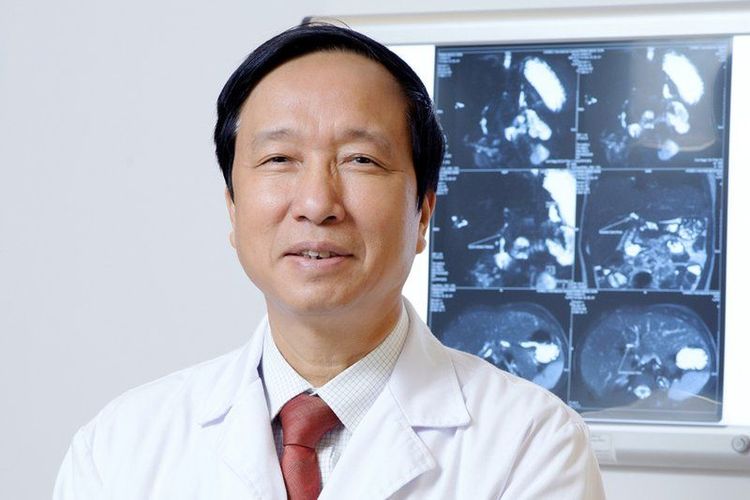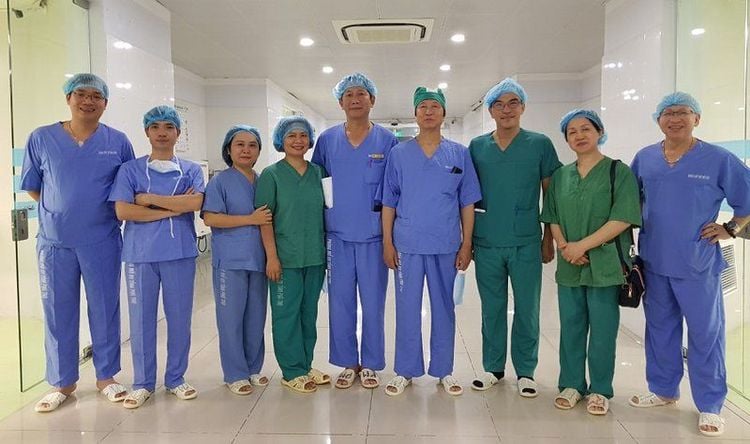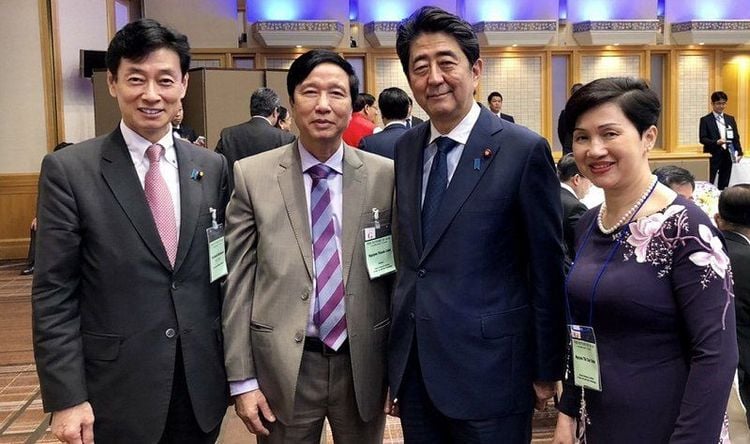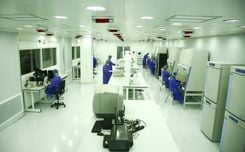Nguyen Thanh Liem leads the Vinmec Research Institute of Stem Cell and Gene Technology in pioneering stem cell-based therapy for cerebral palsy and autism.

Nguyen Thanh Liem
Director
Vinmec Research Institute of Stem Cell and Gene Technology Hanoi, Vietnam
AsianScientist (Sep. 28, 2018) – No parent wants their child to go under the knife, but certain congenital diseases require surgery if the child is to survive. Keen to alleviate the suffering of young patients, Professor Nguyen Thanh Liem found his calling as a pediatric surgeon after studying medicine and completing his residency program at Hanoi Medical University.
Throughout his career, Liem has constantly sought to improve existing surgical procedures and invent new ones so as to reduce risk to patients and promote positive outcomes. He was the first surgeon in Vietnam to perform a minimally invasive laparoscopic surgery on a child in 1997, and also carried out the first kidney and liver transplantations in children’s hospitals in his home country.
Realizing there were health conditions that even surgery could not help with, Liem became interested in stem cell and genetics research. As the director of the Vinmec Research Institute of Stem Cell and Gene Technology, he leads researchers in pioneering stem cell-based therapies for cerebral palsy and autism. For his notable contributions to medicine over the years, Liem was awarded the 2018 Nikkei Asia Prize for science and technology.
In an interview with Asian Scientist Magazine, Liem shared about his motivations and ambitions, and the research that he is currently pursuing.
1. Who or what inspired you to become a pediatric surgeon?
After finishing my medical degree at Hanoi Medical University, I was considering which area of medicine to specialize in. In 1979, I met Dr. Nguyen Xuan Thu, a pediatric surgeon who became my mentor. Working with him, I found it very meaningful to be able to treat children with congenital diseases, hence I decided to continue on this path for my career.
2. You are credited with developing many new pediatric laparoscopic techniques. Which one of them was the most difficult to develop, and why?
The removal of choledochal cysts, otherwise known as bile duct cysts, is a tricky procedure. During the extraction of the cyst, there is a high risk of causing internal bleeding because the cyst lies very close to the hepatic artery and the portal vein. So I modified an existing procedure to mobilize the cyst—separating it from the surrounding blood vessels—thereby making it much safer to remove.
Previously, the operation took about four to five hours to complete. With this modified method, it can be done in about three hours. The risk of complications after the operation was also reduced. I have published six papers on this procedure to remove bile duct cysts. In total, I have pioneered nine new pediatric laparoscopic techniques and performed thousands of laparoscopic and thoracoscopic surgeries, including more than 500 operations of choledochal cysts and more than 300 congenital diaphragmatic hernia surgeries. I have also been invited to perform operations in many countries in Europe and Asia, and my work has been presented at international conferences all over the world.

Professor Nguyen Thanh Liem (fourth from right) and his medical team.
3. What sparked your recent interest in stem cells and genetics?
As the director of Vinmec Research Institute of Stem Cell and Gene Technology, what is your vision for the institute in the next five to ten years? There were many times when I saw children with diseases that could not be cured using conventional surgery, which meant that there was a gap in our knowledge, and we needed to find new treatments. I think stem cells, which possess unique and regenerative properties, have great potential for managing and treating diseases. We are looking at treating two specific diseases with stem cells, namely, cerebral palsy and autism.
Previously, it wasn’t known which types of cerebral palsy could benefit most from stem cell therapy. What my team showed was that stem cell therapy will have the greatest positive impact in children with cerebral palsy caused by a lack of oxygen to the brain, and those with jaundice, where bilirubin accumulates and causes damage to the brain. The findings of our study were published last year in the journal BMC Pediatrics.
The other disease that we want to treat with stem cells is autism. This is a bit more difficult to accept, because few people think of using stem cells for this disease. We are one of the world’s first to explore this approach, and our initial findings have been very promising.
We treated 30 patients with stem cells obtained from their own bone marrows—autologous stem cells. This means that there will not be rejection of the implanted stem cells. We have observed improvements in their cognitive functions as a result of the stem cell treatment. Of course, we will still need to perform follow-up over 12 months, 18 months and so on, but at the moment, the treatment has potential. Our manuscript on this work is currently under review.
The Vinmec Research Institute of Stem Cell and Gene Technology is very young, only about two years old. In the next five to ten years, I hope that we will become a center of excellence for stem cell and genetics research, contributing to better healthcare in Vietnam and the rest of the world.
4. Could you please describe a project that you are working on now?
I am looking at how we can use stem cells to treat liver cirrhosis in children with biliary atresia, which means that they were born without a bile duct, or the bile duct is narrow or blocked. When the bile produced by the liver cannot flow into the bile duct, the liver begins to scar and malfunction. Even after corrective surgery, only 25 percent of children can live with their own liver; the others need a liver transplant, which as you know takes time to secure. Hence, if we can find a way to prevent or reduce the liver cirrhosis and preserve liver function using stem cells, these children will be better off.
5. What are some of the challenges that Vietnam faces in terms of healthcare research?
There are challenges in terms of funding and the procurement of equipment. At Vinmec, most of our research is privately funded, but public funding for research can be improved.
At the same time, there is a need to focus on training the next generation of scientists. This can be done by supporting our students to venture overseas to do research so that they gain global exposure and experience.
We can also invite more eminent researchers from other parts of the world to Vietnam so that we can learn from them some of the best practices and new techniques developed at their institutes. This will facilitate the exchange of ideas and expertise.
6. How do you manage being a surgeon, researcher and director of an institute at the same time?
I have had to divide my time between surgery, research and administration, so I do much less surgery now. During the day, a lot of my time is spent on administration. I oversee 34 full-time staff and ten part-time staff.
Most of the full-time staff are scientists, and there are two medical doctors, myself included. This capable team helps me accomplish the important research at the institute. But I have to spend time after office hours reading papers and updating myself with the latest findings in the field.
7. How do you feel about winning the 2018 Nikkei Asia Prize?
I see it as a recognition of my efforts and am very encouraged by the award. The ceremony itself was a great experience. It was an opportunity to meet with many world leaders and corporate executives. Japan’s Prime Minister Shinzo Abe attended the event, and we were introduced to him.

Professor Nguyen Thanh Liem (second from left) with Japan’s prime minister Shinzo Abe (third from left) at the 2018 Nikkei Asia Prize ceremony.
8. What advice do you have for early career scientists in Asia?
We must have the ambition to improve the wellbeing of people. With this ambition, we must then ask the right questions and constantly seek out new problems and challenges.
Copyright: Asian Scientist Magazine





